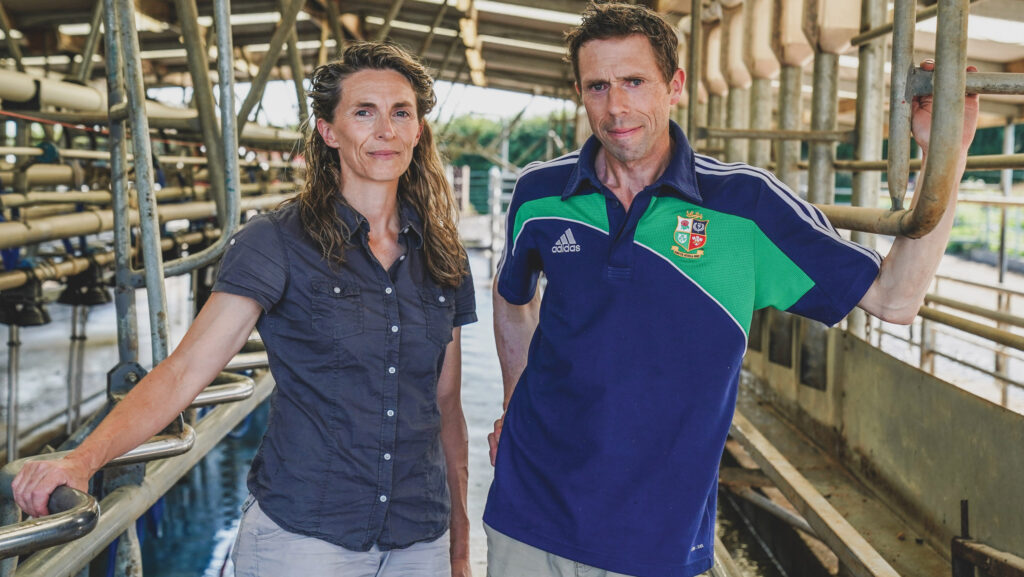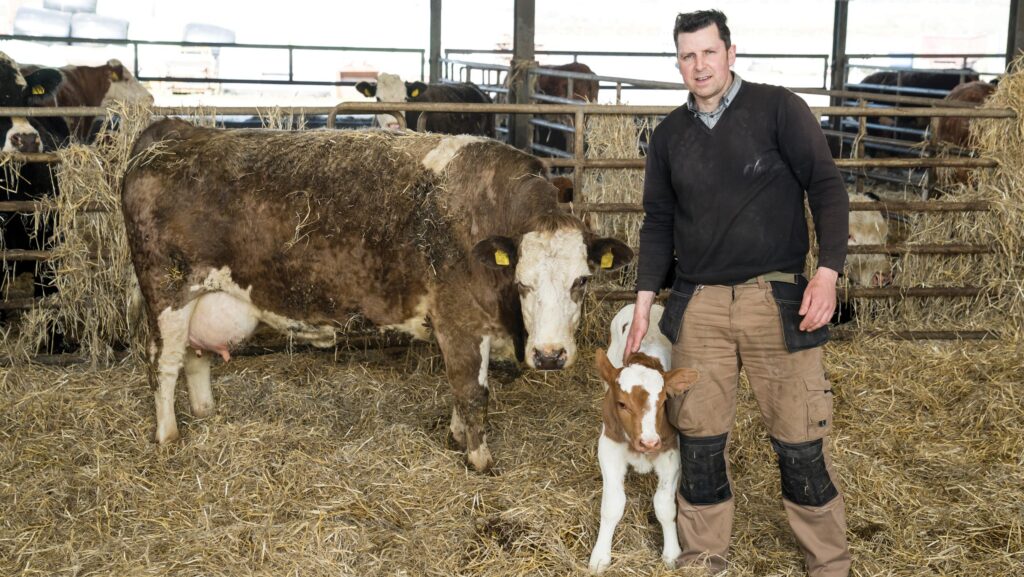Transition Farmers expand and restructure businesses
Farmers Weekly’s Transition project is following a group of farmers on their journey to adapt and meet the challenges of farming.
Here, we look at the progress of two farms.
See also: Transition – ways to generate non-farming income
Richard and Rachel Risdon

Rachel and Richard Risden © Emily Fleur
Transition goals
- Securing adequate labour
- Better understanding of ELM scheme
- Reducing carbon footprint
Tenant farmers Rachel and Richard are significantly increasing their land base by taking on the tenancy of a second farm in north Devon.
This will see them scale up their dairy farming business from 161ha to 414ha, milking 650 spring calving cows across both sites.
The move comes as the Risdons are approaching the halfway point in their 20-year farm business tenancy at Woodrow Barton, Brampford Speke, near Exeter.
Farm facts
- Woodrow Barton, Brampford Speke, Devon
- Farm size: 161ha
- Annual rainfall: 865mm
- Soil type: Clay loam over river gravel
Although their landlord may extend their agreement, with one eye on expansion and a desire to secure the future of their dairy enterprise, the couple are taking on another tenancy.
It will also enable them to offer their herd manager a joint venture opportunity and give him a chance to build up his own equity, according to Rachel.
Jonty Moore has worked for the Risdons for four years and been on a profit share for the past two.
The agreement will be based on a New Zealand-style, lower-order share milking arrangement.
He will own the machinery and take charge of staffing the farm.
This is part of a solution to achieving one of the couple’s Transition goals – to secure adequate labour – by offering an opportunity over and above a paid salary.
The Risdons are further ahead with another goal too, reducing their carbon footprint, joining the Leaf net-zero project and being appointed a farm consultant to work with.
One of the changes they are introducing is to include more diverse species in their reseeding mix.
“We don’t know how herbal leys will work in our rotational grazing system, but we are giving it a go,” says Rachel.
Gaining a better understanding of the Environmental Land Management (ELM) scheme was another target the Risdons set themselves when they became Transition Farmers.
“We are doing less well on that, it can take hours to read through everything,” she says.
As a tenant farmer, Rachel is concerned that ELM will drive up rents.
“If farmers can receive a big payment for growing bird seed, why would they bother renting it out?” she questions.
“That’s where the government needs to think more carefully about what food we need to produce in this country or it will skew the markets.”
Fergal Watson

Fergal Watson © Steffan Hill
Transition goals
- Recruiting and retaining farm staff
- Restructuring suckler herd
- Improving business resilience
The first Stabiliser calves are being born at Watson Farms this spring, two years after suckler beef producer Fergal made the decision to move away from continental breeds.
One of his Transition goals was to restructure his herd and he is making some progress.
He first used Stabiliser genetics on his Simmental heifers two years ago and the resulting female progeny are now giving birth at his farm on the Ards Peninsula in County Down.
“The calves don’t look very exciting for the first few months, but they then shape up,” says Fergal.
Farm facts
- Watson Farms, Ards Peninsula, County Down
- Farm size: 285ha split across three units
- Annual rainfall: 810mm
- Soil type: Sandy to medium loam
He is also phasing out the Limousin and Charolais.
“Limousins are too wild, dangerous to handle, and the Charolais calves are a bit lethargic getting on their feet and suckling.
“They are good breeds, but I wasn’t happy to accept having lazy 50-60kg Charolais calves and wild Limousins.”
Simmentals are being retained, but the herd will be predominantly Stabiliser.
“The Stabiliser is not as big as the breeds I have had. But a suckler cow is unproductive and consuming feed for six months in the winter, so a smaller cow means less feed and cost, and more efficiency,” he says.
“A 700kg cow will eat a lot of feed, but the trade off with having a smaller cow is a calf that is likely to be 30kg lighter at slaughter.”
He now has five Stabiliser bulls, all sourced from herds in Northern Ireland, and one Simmental.
Staff recruitment and retention was another area Fergal wanted to improve on.
His wife, Lucy, took a career break from her job as a civil servant last year after one of the farm staff retired.
She intended to work in the business for a year, but enjoyed it so much that she is now in her second year working on the farm.
Her job allows a career break of up to five years, so she could be actively farming for the longer haul.
Improving business resilience is another Transition aspiration and the Stabiliser fits well with that, says Fergal.
But resilience has taken a knock overall on the 340-acre combinable crops enterprise.
In the 12 months to October 2023, the region experienced seven record-breaking dry and wet weather events.
“We harvested 32 days later than we normally would, quality and yield were down and the arable side of the business lost money,” says Fergal.
